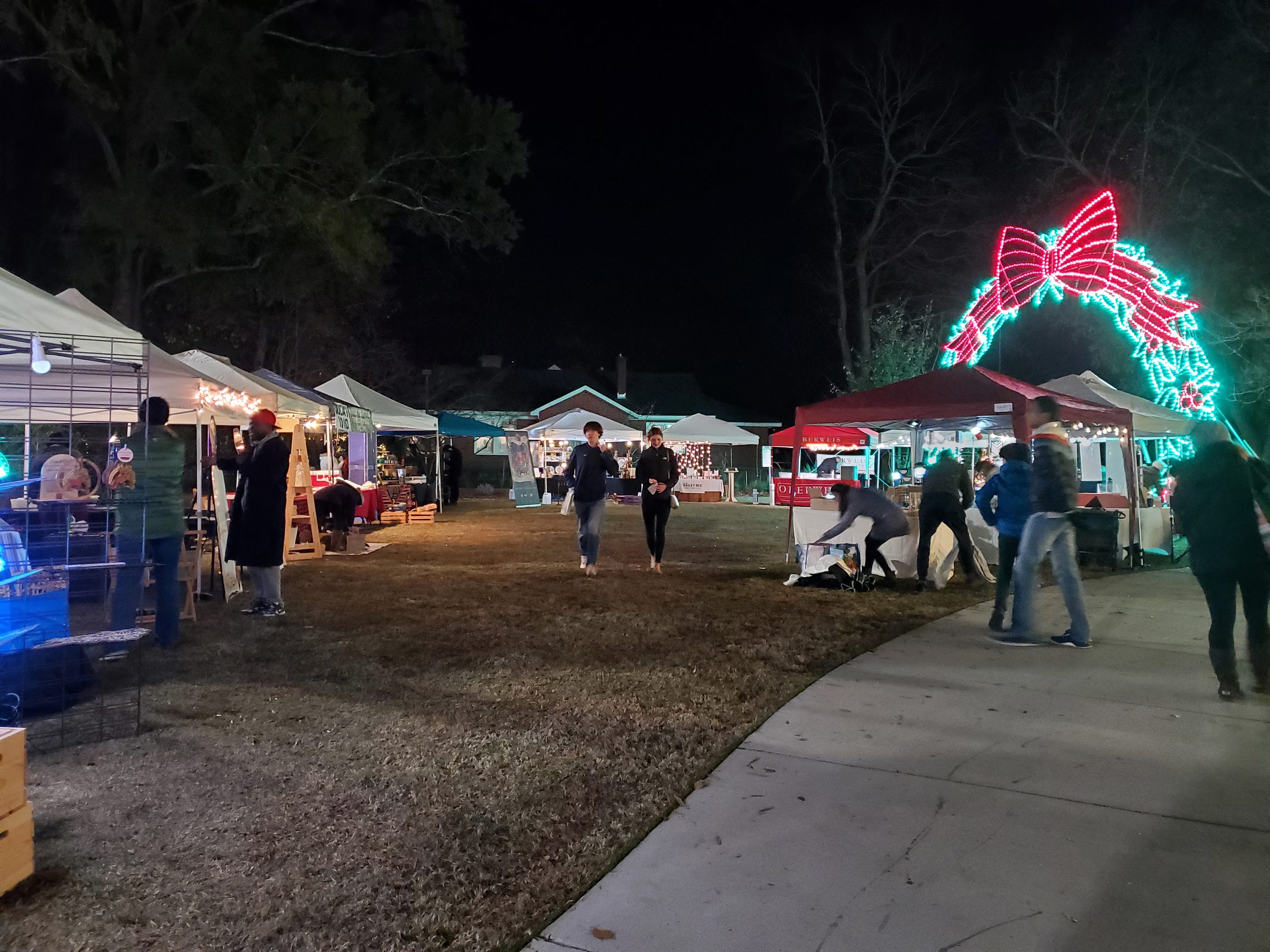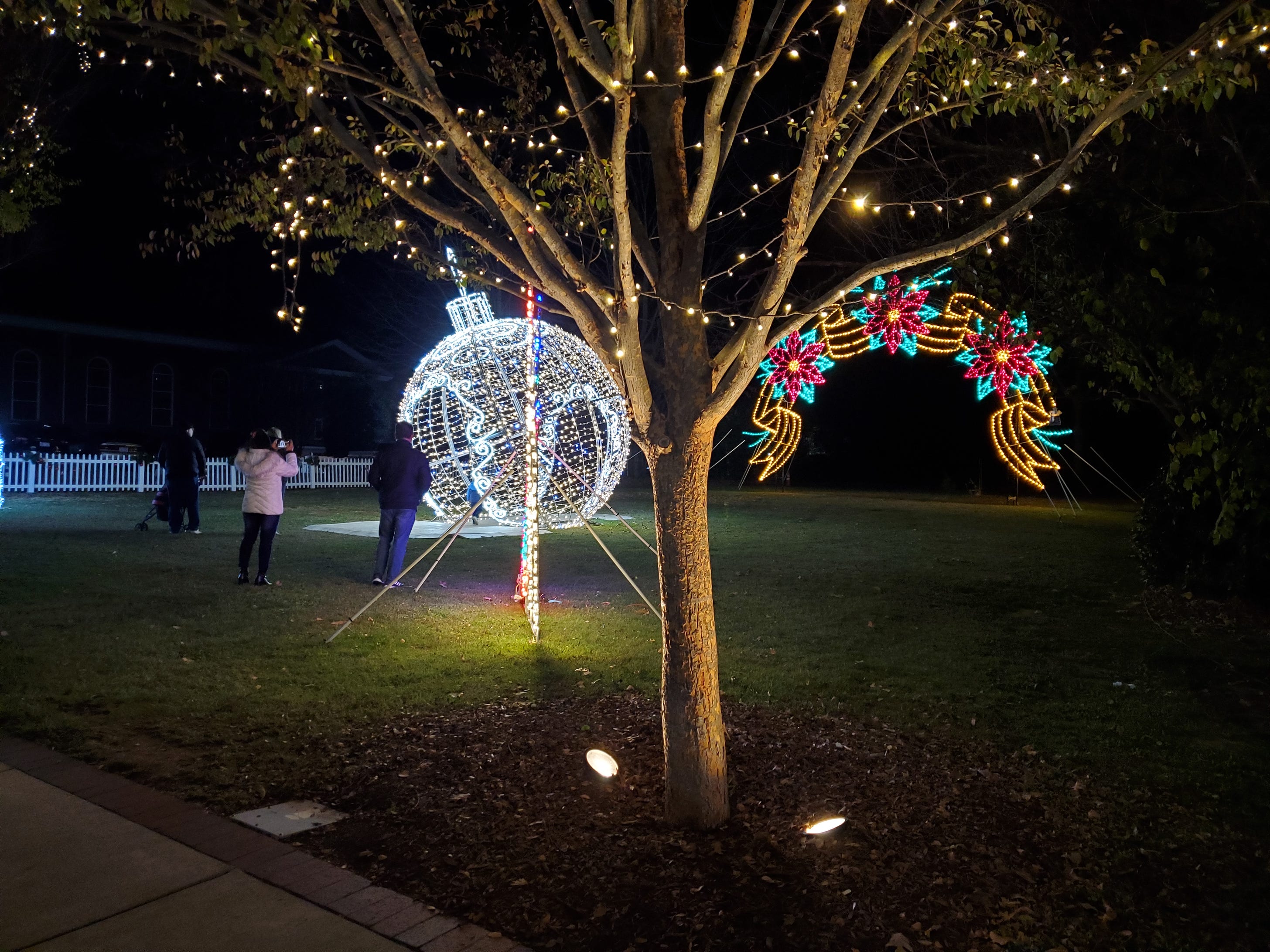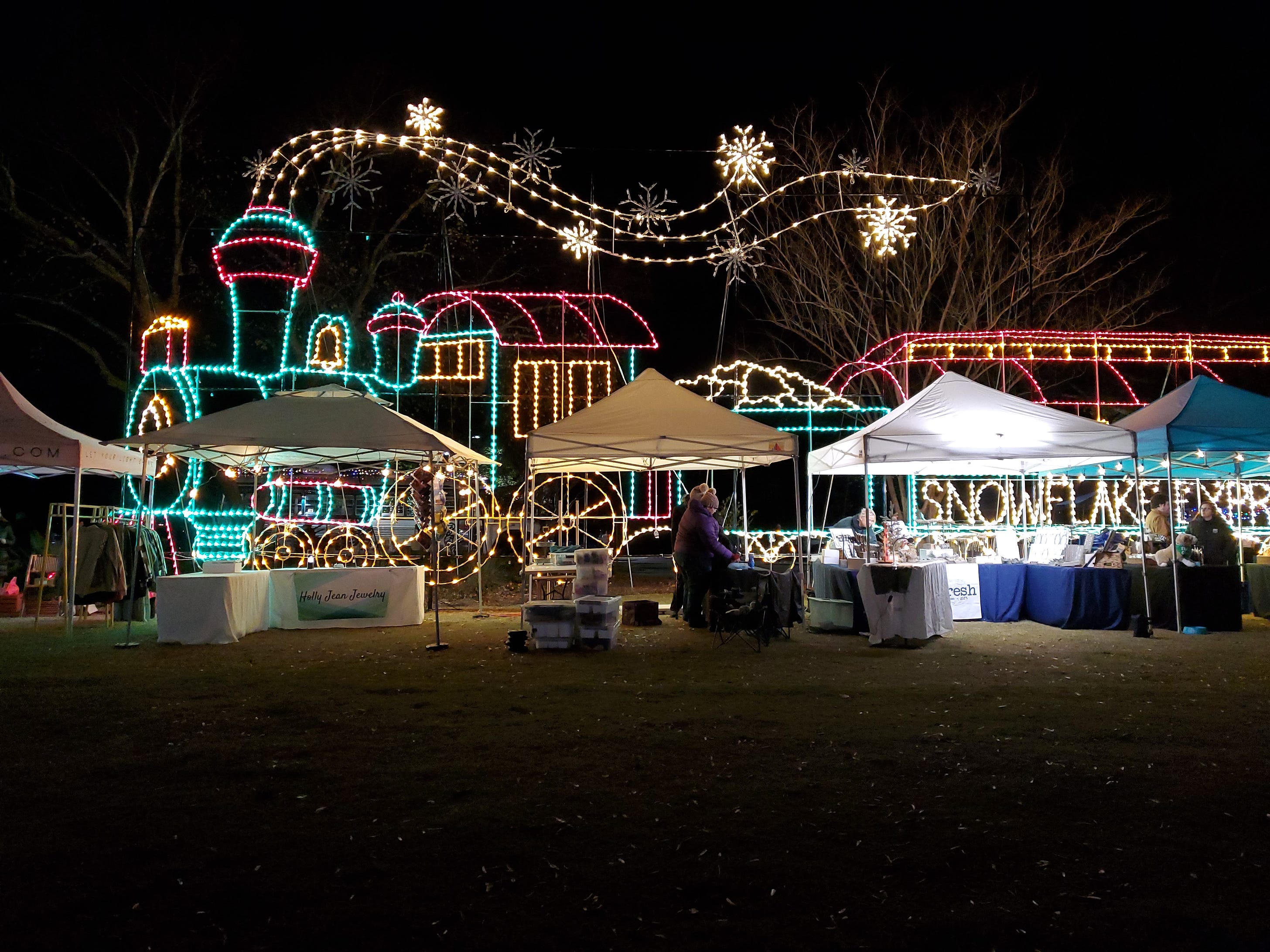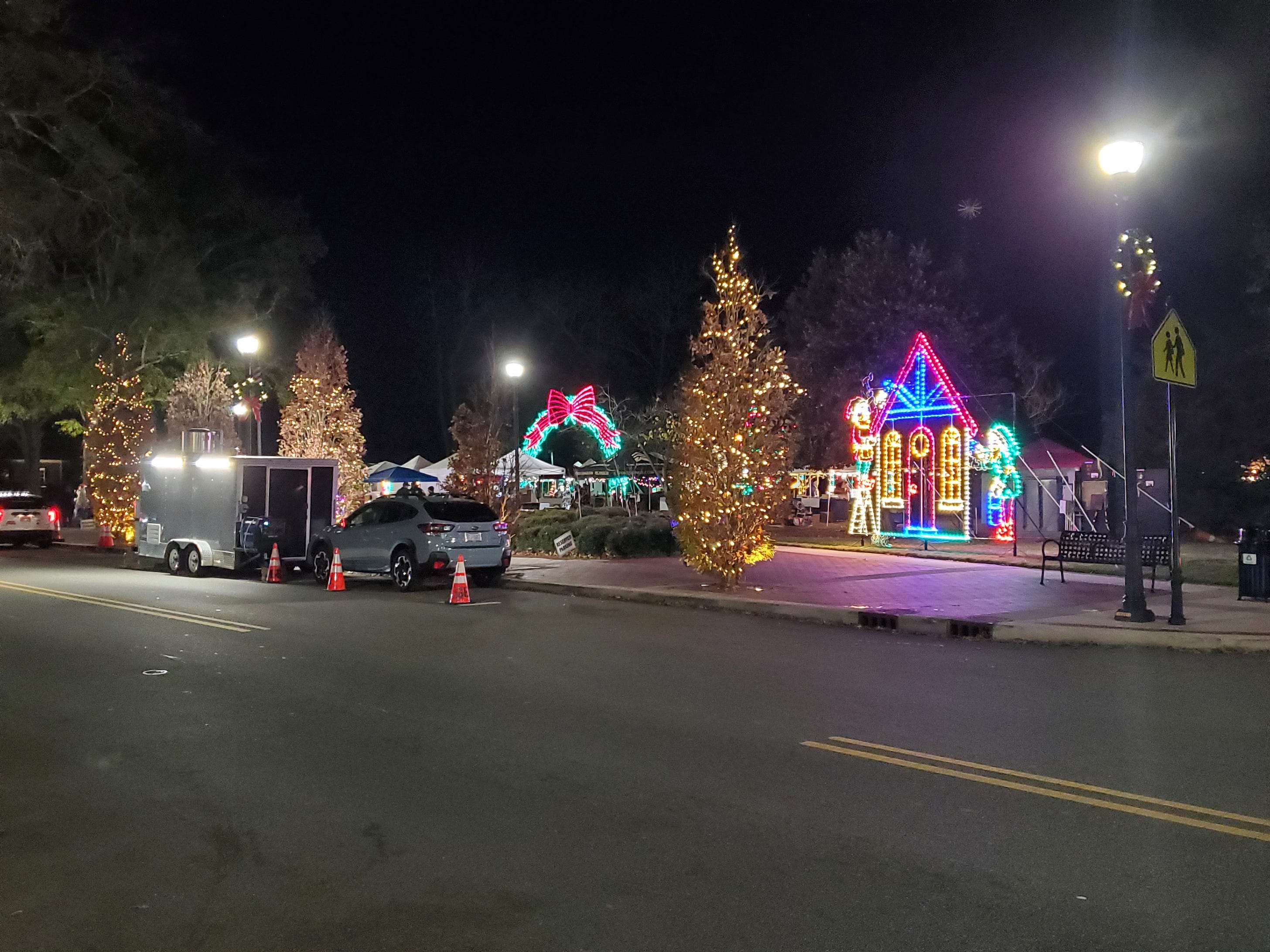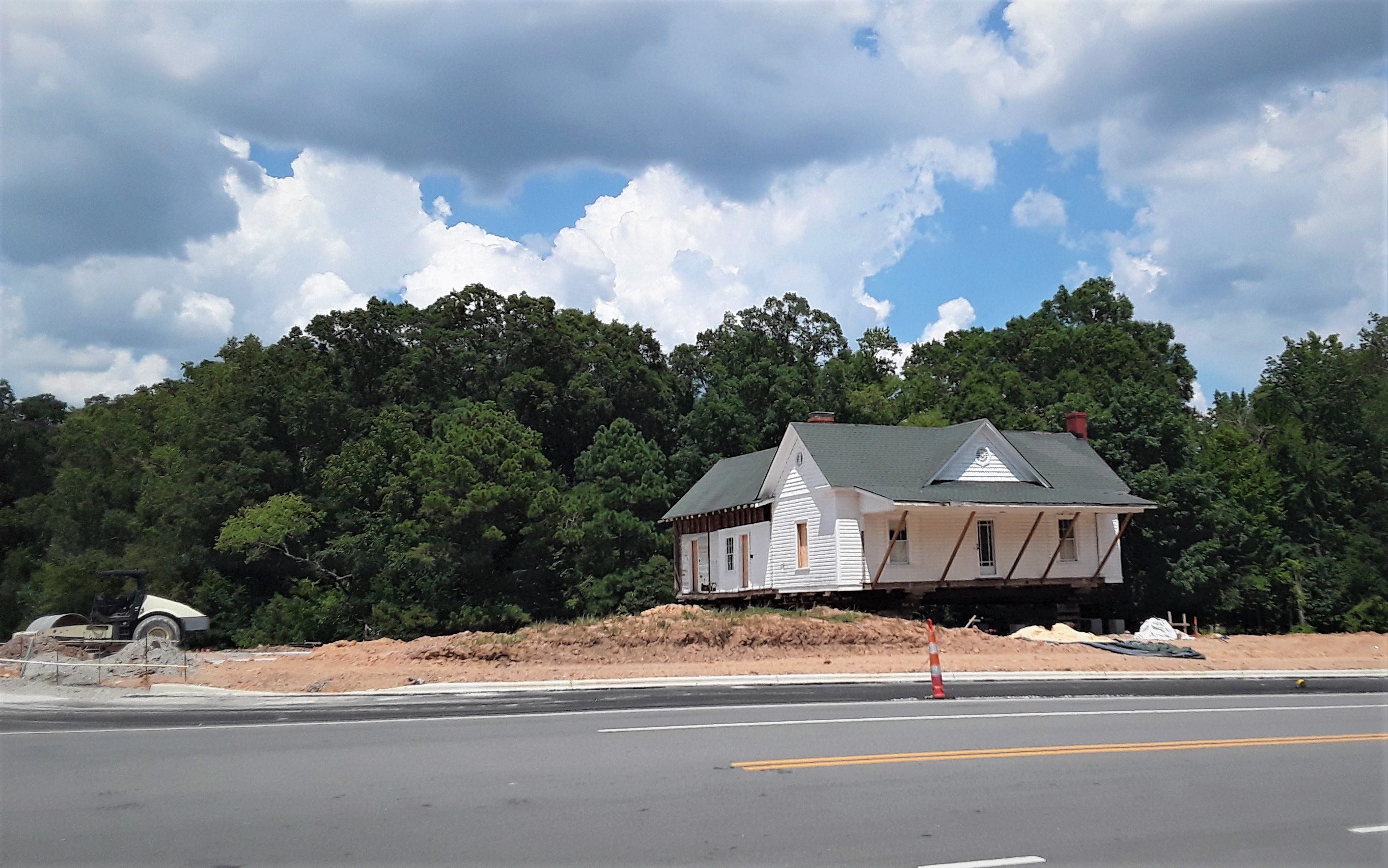The Deleted Scenes - The Rest of Cary
I wrote recently about accidentally driving into downtown Cary, North Carolina, on an evening when they had a Christmas market set up. It was very hard to park, but once we found a spot, it was lovely to walk around the bright, decorated old town. We had dinner in downtown Cary too, which is why we were there in the first place. And while I knew Cary was a “real town,” I had never been there. I had simply assumed our restaurant, which we found on Yelp, was somewhere in the suburbs. But I’m glad we ended up in the old town, because this is what we saw: And this is part of what I wrote:
Now, downtown Cary looks a lot like my own hometown of Flemington, New Jersey. Cary is a little bigger, but not by that much. Flemington has a population of about 5,000 people, and its city limits are only a little larger than its old street grid. The “Flemington area” is considerably larger—about 22,000 people live in the township that surrounds the town. So the overall area that people call “Flemington” is home to close to 30,000 people. So if you took only the downtown of Cary, you might guess that the overall “Cary area,” extrapolating from the usual pattern with old towns that have newer suburban penumbras, was home to anywhere from say 20,000 to 30,000 people, roughly, with a few thousand in the actual town and the rest in the newer surrounding area. And if you looked at the Census data over the decades, you’d think you were pretty close. In 1930, Cary’s population was 909. (For comparison, in that year Flemington had 2,729 people.) In 1980, Cary had 21,763. Even in 1990, it was about 44,000. Today, its about 177,000. Cary is “the seventh largest municipality in North Carolina, and the 148th largest in the United States.” I don’t quite know what to make of that. It’s nice that the original town is still mostly intact, and still attracts crowds. But its such a tremendous shame that all of that growth—a doubling every 10-20 years for over half a century—took place outside of any sort of traditional urban pattern. Time and time again, we see this phenomenon where people live in, and builders build, suburban sprawl, but where the handful of surviving places built in the traditional development pattern cost more and draw more people. At one time—any time before the 1970s, probably—the “old town” of Cary was Cary. Over the years, as the region grew, the new development simply neglected the existing center of the place, until it became this leftover appendage—at best, an entertainment center, not a pattern for the new growth where most people who live in Cary actually live. This is much more typical of Cary than the photos above: It’s an old farmhouse being moved away, to make room for a subdivision. As in so many other growing regions, the debate seems to end up being between people who feel development threatens the old character and feel of the place, and want as little as possible, versus developers who just want to build and will follow the path of least resistance. And typically the path of least resistance is the disconnected patchwork of low-density development and strip malls, maybe with townhomes or apartments thrown in. But it doesn’t amount to an overall place, an overall fabric. Why is it that you just know you’re somewhere on a classic Main Street, but you don’t get that feeling out in modern suburbia? Yet few people, and even few municipal governments, seem to take seriously the idea that we could build a lot more new stuff along the old pattern. Why? I keep asking this question. Why don’t more people demand that we build more of what we all love? The failure to do so no doubt intensifies the idea that a place is “full,” and that development is inherently opposed to whatever it is that makes the place nice right now. This is Durham, but it’s typical of the whole region’s newer development: Yeah, when it’s this or nothing, nothing can sound pretty good. But it doesn’t have to be. The Triangle is one of the nation’s fastest growing metro areas. Imagine if it were collectively one of America’s finest urban environments. So much opportunity to turn growth into beauty. Related Reading: Thank you for reading! Please consider upgrading to a paid subscription to help support this newsletter. You’ll get a weekly subscribers-only post, plus full access to the archive: over 400 posts and growing. And you’ll help ensure more material like this! You're currently a free subscriber to The Deleted Scenes. For the full experience, upgrade your subscription. |
Older messages
The Case of the Car Seats
Tuesday, December 13, 2022
When something very simple is very profound
Crime and Housing
Monday, December 12, 2022
Something for everyone to disagree with
Sometimes They Mess Up and Do It Right
Saturday, December 10, 2022
Do you like having work done on your house?
New and Old #87
Friday, December 9, 2022
Friday roundup and commentary
Street Styles
Thursday, December 8, 2022
Applying evolution to things we make
You Might Also Like
Trump's Politically Insane Decision to Shut Down the Dept. of Education
Friday, March 21, 2025
Trump may have just handed Democrats an issue than break through all of the noise. ͏ ͏ ͏ ͏ ͏ ͏ ͏ ͏ ͏ ͏ ͏ ͏ ͏ ͏ ͏ ͏ ͏ ͏ ͏ ͏ ͏ ͏ ͏ ͏ ͏ ͏ ͏ ͏ ͏ ͏ ͏ ͏ ͏ ͏ ͏ ͏ ͏ ͏ ͏ ͏ ͏ ͏ ͏ ͏ ͏ ͏ ͏ ͏ ͏ ͏ ͏ ͏ ͏ ͏ ͏ ͏ ͏ ͏ ͏
“War” by Gary Copeland Lilley
Friday, March 21, 2025
Daniel has a stripper girlfriend he says ͏ ͏ ͏ ͏ ͏ ͏ ͏ ͏ ͏ ͏ ͏ ͏ ͏ ͏ ͏ ͏ ͏ ͏ ͏ ͏ ͏ ͏ ͏ ͏ ͏ ͏ ͏ ͏ ͏ ͏ ͏ ͏ ͏ ͏ ͏ ͏ ͏ ͏ ͏ ͏
Happiness really is a state of mind
Friday, March 21, 2025
— Check out what we Skimm'd for you today March 21, 2025 Subscribe Read in browser Header Image Together with beats But first: did you hear? Update location or View forecast Quote of the Day "
Fifty Shades of Growth
Friday, March 21, 2025
Birth and death rates are quietly determining tomorrow's real estate hotspots ͏ ͏ ͏ ͏ ͏ ͏ ͏ ͏ ͏ ͏ ͏ ͏ ͏ ͏ ͏ ͏ ͏ ͏ ͏ ͏ ͏ ͏ ͏ ͏ ͏ ͏ ͏ ͏ ͏ ͏ ͏ ͏ ͏ ͏ ͏ ͏ ͏ ͏ ͏ ͏ ͏ ͏ ͏ ͏ ͏ ͏ ͏ ͏ ͏ ͏ ͏ ͏ ͏ ͏ ͏ ͏ ͏ ͏ ͏ ͏
Three Wins
Friday, March 21, 2025
A smarter way to learn in 3 minutes ͏ ͏ ͏ ͏ ͏ ͏ ͏ ͏ ͏ ͏ ͏ ͏ ͏ ͏ ͏ ͏ ͏ ͏ ͏ ͏ ͏ ͏ ͏ ͏ ͏ ͏ ͏ ͏ ͏ ͏ ͏ ͏ ͏ ͏ ͏ ͏ ͏ ͏ ͏ ͏ ͏ ͏ ͏ ͏ ͏ ͏ ͏ ͏ ͏ ͏ ͏ ͏ ͏ ͏ ͏ ͏ ͏ ͏ ͏ ͏ ͏ ͏ ͏ ͏ ͏ ͏ ͏ ͏ ͏ ͏ ͏ ͏ ͏ ͏ ͏ ͏ ͏ ͏ ͏ ͏ ͏ ͏ ͏
1 Kettlebell. 30 Minutes. Total Body Strength
Friday, March 21, 2025
Mens Health Shop logo Get shredded all over in just 30 days! No Gym Required: Kettlebells One Kettlebell, Serious Results One Kettlebell, Serious Results Want to build major muscle? Save yourself some
Stylists Agree — This Is The 2025 Way To Wear Leggings
Friday, March 21, 2025
They're everywhere again. The Zoe Report Daily The Zoe Report 3.20.2025 Stylists Agree — This Is The 2025 Way To Wear Leggings (Style) Stylists Agree — This Is The 2025 Way To Wear Leggings They
3x3: March 20, 2025
Friday, March 21, 2025
*big stretch* ͏ ͏ ͏ ͏ ͏ ͏ ͏ ͏ ͏ ͏ ͏ ͏ ͏ ͏ ͏ ͏ ͏ ͏ ͏ ͏ ͏ ͏ ͏ ͏ ͏ ͏ ͏ ͏ ͏ ͏ ͏ ͏ ͏ ͏ ͏ ͏ ͏ ͏ ͏ ͏ ͏ ͏ ͏ ͏ ͏ ͏ ͏ ͏ ͏ ͏ ͏ ͏ ͏ ͏ ͏ ͏ ͏ ͏ ͏ ͏ ͏ ͏ ͏ ͏ ͏ ͏ ͏ ͏ ͏ ͏ ͏ ͏ ͏ ͏ ͏ ͏ ͏ ͏ ͏ ͏ ͏ ͏ ͏ ͏ ͏ ͏ ͏ ͏ ͏ ͏ ͏ ͏ ͏ ͏
March 25: Amazon's Big Spring Sale Is Coming
Thursday, March 20, 2025
Secret Tunnels Under Gene Hackman's House? Here's what you can expect during Amazon's mini Spring Prime Day-like sale. Not displaying correctly? View this newsletter online. TODAY'S
Bella Hadid Wore The Teeniest Bikini During A Beach Photoshoot
Thursday, March 20, 2025
Plus, the rise of the "bunny bangs" trend, your daily horoscope, and more. Mar. 20, 2025 Bustle Daily Why Do Friends Stop Talking About Sex As They Get Older? THIRSTY THIRTIES Why Do Friends
